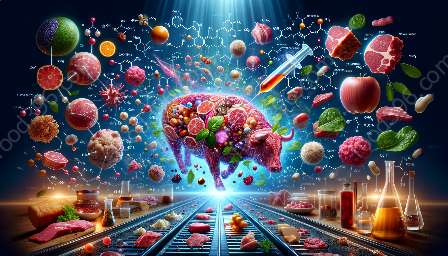Meat is not just a source of protein; it is a complex matrix of compounds that contribute to its flavor. Understanding the flavor chemistry of meat is essential for food scientists, chefs, and meat enthusiasts to unlock the secrets behind the unique taste and aroma of different cuts and species. The flavor chemistry of meat is an intricate web of compounds, reactions, and sensory experiences that make it a fascinating and crucial area of study.
The Basics of Meat Chemistry
Before delving into the flavor chemistry of meat, it's important to understand the fundamental principles of meat chemistry. Meat is primarily composed of water, protein, fat, and minerals, with each component influencing its flavor and overall quality. The muscle proteins, particularly myoglobin, play a significant role in the flavor development of meat, as they are responsible for its color, taste, and aroma. The interplay of these compounds with heat, enzymes, and other flavor-contributing elements results in the diverse range of flavors found in different meats.
Flavor Development in Meat
Flavor development in meat is a multi-faceted process influenced by various factors such as breed, diet, age, and the method of cooking. One of the key contributors to meat's flavor is the Maillard reaction, a complex chemical reaction between amino acids and reducing sugars that occurs during high-temperature cooking. This reaction generates a wide array of flavor compounds that contribute to the characteristic taste and aroma of roasted, grilled, or seared meats.
Moreover, the fat content in meat significantly impacts its flavor. Intramuscular fat, also known as marbling, not only affects the juiciness and tenderness of meat but also adds depth and richness to its flavor profile. The interaction between fat, protein, and moisture during cooking creates a harmonious blend of flavors that distinguishes different cuts and grades of meat.
Impact of Terroir and Aging
Terroir, the unique environmental factors such as soil, climate, and forage that influence the growth and development of livestock, plays a crucial role in shaping the flavor chemistry of meat. Animals raised in different regions or fed on distinct diets exhibit varied flavor profiles due to the diverse compounds absorbed from their surroundings. Additionally, aging meat through dry-aging or wet-aging methods further enhances its flavor complexity by allowing enzymatic and biochemical processes to transform its taste and texture.
The Role of Volatile Compounds
Meat's aroma is intricately linked to its flavor, and volatile compounds are responsible for creating the characteristic smells associated with different types of meat. These volatile compounds, including aldehydes, ketones, and esters, are released during cooking and contribute to the overall sensory experience of consuming meat. The combination of these compounds, along with non-volatile flavor components, forms the intricate tapestry of aromas that distinguish beef, pork, lamb, and other meats.
Sensory Evaluation and Consumer Perception
Understanding the flavor chemistry of meat goes beyond scientific analysis and extends to sensory evaluation and consumer perception. The sensory experience of meat consumption involves the perception of taste, aroma, texture, and mouthfeel, which collectively contribute to an individual's preference for specific meat products. Factors such as cooking methods, seasoning, and cultural influences also shape consumer perception of meat flavor, making it a subject of immense interest for food marketers and culinary professionals.
Future Trends and Innovations
The exploration of meat flavor chemistry continues to evolve with advancements in analytical techniques, molecular gastronomy, and sensory science. Researchers and industry experts are continually seeking new ways to unravel the complexities of meat flavor and develop innovative approaches to enhance and differentiate meat products. From precision cooking technologies to the utilization of natural flavor enhancers, the future of meat flavor chemistry holds promise for creating new sensory experiences and meeting the diverse preferences of global consumers.
Conclusion
The flavor chemistry of meat represents a captivating convergence of biological, chemical, and sensory principles that define our culinary experiences. By unraveling the intricate web of compounds and reactions that shape meat flavor, we gain a deeper appreciation for the diverse tastes and aromas found in the world of meat. From the sizzle of a perfectly seared steak to the succulence of slow-cooked barbecue, the flavor chemistry of meat invites us to explore and savor the rich tapestry of flavors that this essential food ingredient offers.

